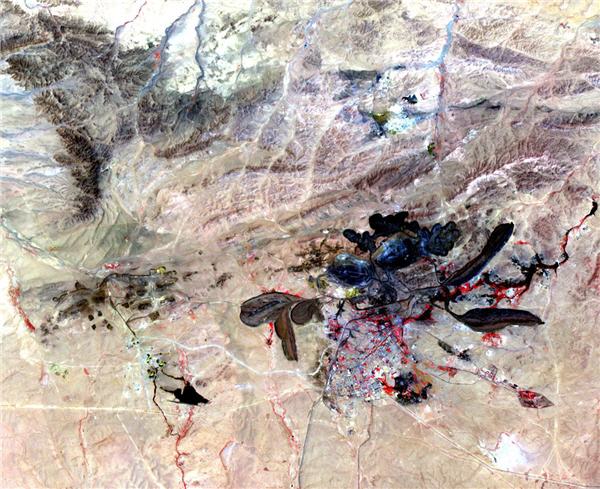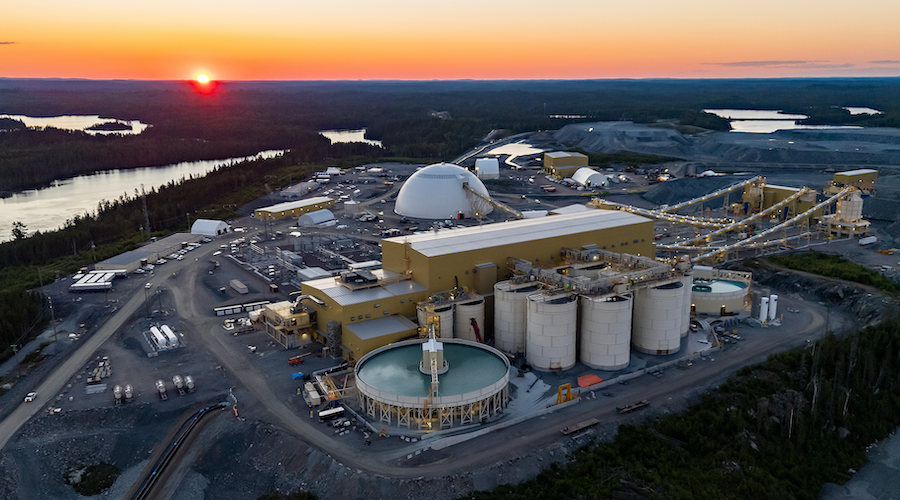Chinese rare earth giant born

The giant mine in Bayan Obo, Inner Mongolia near Baotou City, produces the bulk of the world’s rare earths and does so as a byproduct of iron ore mining. | Source: NASA
China’s leading rare earth producer – Inner Mongolia Baotou Steel Rare-Earth (Group) Hi-Tech Co. to give its full name – is set to further tighten its grip on the industry.
Baotou’s giant mine in Bayan Obo, Inner Mongolia near Baotou City, produces the bulk of the world’s rare earths and does so as a byproduct of iron ore mining.
SMM reports Baotou will merge with five smaller rare earth firms to establish the China North Rare Earth Group Co.
Baotou will acquire shareholdings in Baotou Feida Rare Earth Co., Baotou Jinmeng Rare Earth Co., Baotou Hongtianyu Rare Earth Magnets Co., Wuyuan Runze Rare Earth Co., and Xinyuan Rare Earth Hi-Tech & New Material Co.
The five rare earth separation and refining businesses have a combined rare earth processing capacity of 73,500 tonnes per year.
That compares to Molycorp’s Mountain Pass mine in California which is targeting production of 20,000 tonnes but may not even reach half that this year. Across Molycorp’s (NYSE:MCP) mining, refining and alloys business sales came in at 3,356 tonnes during the third quarter. The only other producer outside China, Australia’s Lynas is expected to meet its 11,000 tonnes per year production target from its Malaysian plant during the fourth quarter.
In order to crack down on illegal mining, pollution and modernize the country’s mostly low-tech industry Beijing is consolidating the industry under six large organizations including Baotou, China Minmetals Corporation, Aluminum Corporation of China (Chinalco), Guangdong Rare Earth Group, Xiamen Tungsten and Ganzhou Rare Earth Group with each group assimilating dozens of small miners, recyclers and processors.
China is responsible for roughly 90% of mined output of rare earths and is also the top user. The country’s downstream industry consumes 70% of global production which is expected to grow 9% to 127,000 tonnes this year according to official estimates.
The consolidation of China’s rare earth industry will further increase the prevalence of captive supply.
In China purchasers of raw material that produce downstream rare earths products like powders and magnetic alloys are eligible for a 16% VAT rebate.
That’s one of the reasons Chinese producers like Baotou and Chinalco have invested heavily in downstream facilities (thanks to its three Chinese plants, Molycorp also happens to be one of the companies benefiting from the rebate).
This image was taken by the Advanced Spaceborne Thermal Emission and Reflection Radiometer (ASTER) on board the NASA research satellite Terra. The image covers an area of 15 × 19 km.
{{ commodity.name }}
{{ post.title }}
{{ post.date }}




2 Comments
Don Bailey
No scale, no north arrow. No known location mark.
Waz
The image used, looks like one of my kid’s random, abstract art work 🙂